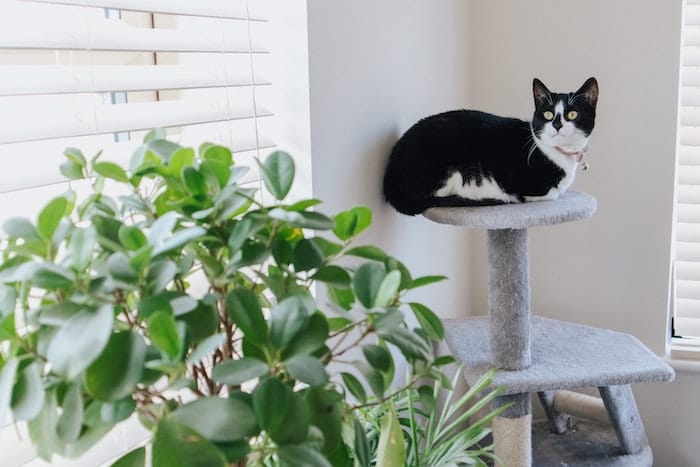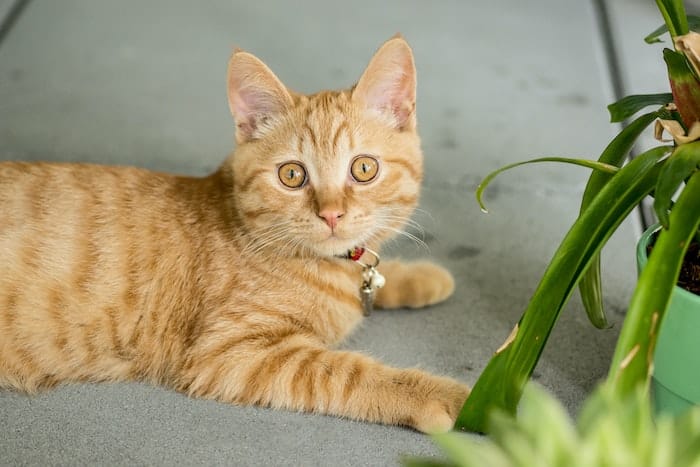If you’re a fur parent, one of the struggles of being one is keeping its behavior in check while it roams around the house. Cats are delightful to be around. Once you have made sure you feed them, pet them, play with them, and provide them with the necessary care, they make your house a home.
However, they are also known to have destructive behavior from time to time. For instance, they might scratch your furniture or play with the curtains. They might run around in the middle of the night without knowing why. Although you have to pay attention to your cats, these are normal behaviors as they were only acting to their feline instincts to stretch, hunt, and mark their territory.
While these behaviors are completely normal, they should not get in the way of a spic-and-span house, especially if you have greenery inside. Houseplants are perfect decorations for any home because they add life and color. Unfortunately, most cats might particularly like plants for the wrong reasons, so you may want to get more tips here to know why they often like to chew and mess with the foliage.
You might be curious about how to coexist with your cats and plants. Continue reading to learn how.
Observe Your Cats
Although there are many tips for living with cats and plants, no one knows your cat better than you. So, the first step is understanding your cat’s behavior and habits. Monitoring your cat’s interaction with your indoor plants is paramount as there are various reasons why your cats behave like that. They might be curious about how the plants taste, or they might be finding ways to cure their boredom. You can employ different precautions if you determine what triggers your cat when it chews, digs, or ignores the plant in your house.
Know Your Plants
Not all plants are suitable for cats. Some could cause digestive problems, whereas others could be toxic. Never assume that your cat knows what plants are dangerous for them. You could spruce up your home’s interior design by getting these cat-safe indoor plants:
- Bamboo palm
- African violet
- Boston fern
- Cast-iron plant
- Christmas cactus
- Donkey’s tail
- Gerbera daisy
- Parlor palm
- Spider plant
- Baby’s breath
- Sweet potato vine
- Hibiscus
Meanwhile, avoid the poisonous plants below because they may cause symptoms like digestive issues, swelling, kidney failure, difficulty breathing, etc. Reactions might differ from cat to cat, but they can range from mild to potentially deadly allergic reactions. If you think your cat ingested one of these plants, it would be best to contact an emergency vet immediately.
- Aglaonema
- Aloe
- Autumn crocus
- Devil’s backbone
- Dumb cane
- English ivy
- Kalanchoe
- Lily
- Silver jade
- Pencil cactus
Train Your Cat
Training your cat is possible, like how you do the same with your dog, but it takes patience and time to work. It would be best to also be quick and consistent during the process. Speed is vital in training them because they can associate their actions with either reward or punishment. Teaching them is only possible if you’re always at home and willing to try simple exercises with them until they learn. You must note that knowing what motivates your cat is essential in teaching them to leave your plants alone.
Keep Your Plants Away From Your Cats
With cats at home, it’s tough to grow your houseplants because they either become their litter boxes or chew them out until their leaves fall off. While many cat owners quit growing indoor plants, there are ways to safeguard them from your cats, as follows:
- Hang your plants. Hanging your plants from the ceiling or wall lessens the chance that they’d be destroyed or knocked over. Besides, hanging your plants adds to the overall aesthetic of your house through proper placement.
- Mount to the wall. Another way to keep your plants away from cats is to mount them to the wall. You could use different styles of wall-mount terrarium planters based on the plant size. It’s recommended to have only small plants planted on these because there’s still a chance that your cat might knock them over.
- Have a tall planter. One alternative is to plant your indoor plants on taller planters so they won’t reach them. You can get plants or small trees that don’t have many leaves near the bottom to lure your kitty.
- Give Them A Distraction
If you don’t want your cat to ruin all of your indoor plants, consider giving it its own plant to play in and mess up? To efficiently use this method, you should train it to divert its attention to the chosen plant instead of your indoor plants. One of the most popular plant choices is cat grass. It soothes your cat’s instinct and provides vitamins and minerals to help with its digestion.
Final Thoughts
Being a fur parent and a plant mom simultaneously is a tough job. You have to find the balance to achieve coexistence and take care of both. Before trying the tips here, it would be best to consult a veterinarian first. In some rare cases, a cat might exhibit some behavioral issues, and these are beyond your control. Moreover, other medical issues might arise, so you should refer to a professional.
Related Reading


